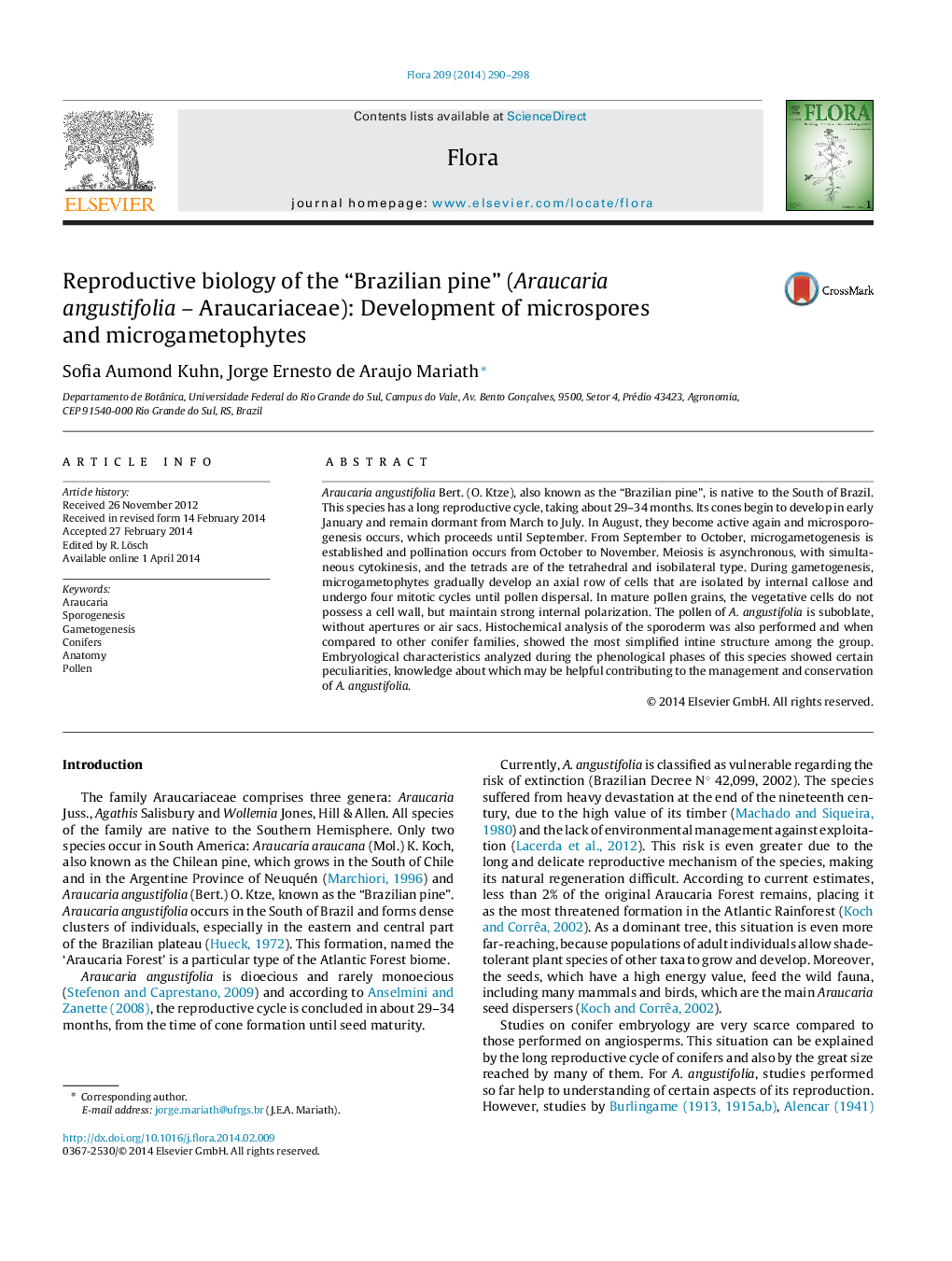| کد مقاله | کد نشریه | سال انتشار | مقاله انگلیسی | نسخه تمام متن |
|---|---|---|---|---|
| 2179556 | 1549950 | 2014 | 9 صفحه PDF | دانلود رایگان |

Araucaria angustifolia Bert. (O. Ktze), also known as the “Brazilian pine”, is native to the South of Brazil. This species has a long reproductive cycle, taking about 29–34 months. Its cones begin to develop in early January and remain dormant from March to July. In August, they become active again and microsporogenesis occurs, which proceeds until September. From September to October, microgametogenesis is established and pollination occurs from October to November. Meiosis is asynchronous, with simultaneous cytokinesis, and the tetrads are of the tetrahedral and isobilateral type. During gametogenesis, microgametophytes gradually develop an axial row of cells that are isolated by internal callose and undergo four mitotic cycles until pollen dispersal. In mature pollen grains, the vegetative cells do not possess a cell wall, but maintain strong internal polarization. The pollen of A. angustifolia is suboblate, without apertures or air sacs. Histochemical analysis of the sporoderm was also performed and when compared to other conifer families, showed the most simplified intine structure among the group. Embryological characteristics analyzed during the phenological phases of this species showed certain peculiarities, knowledge about which may be helpful contributing to the management and conservation of A. angustifolia.
Journal: Flora - Morphology, Distribution, Functional Ecology of Plants - Volume 209, Issues 5–6, June 2014, Pages 290–298